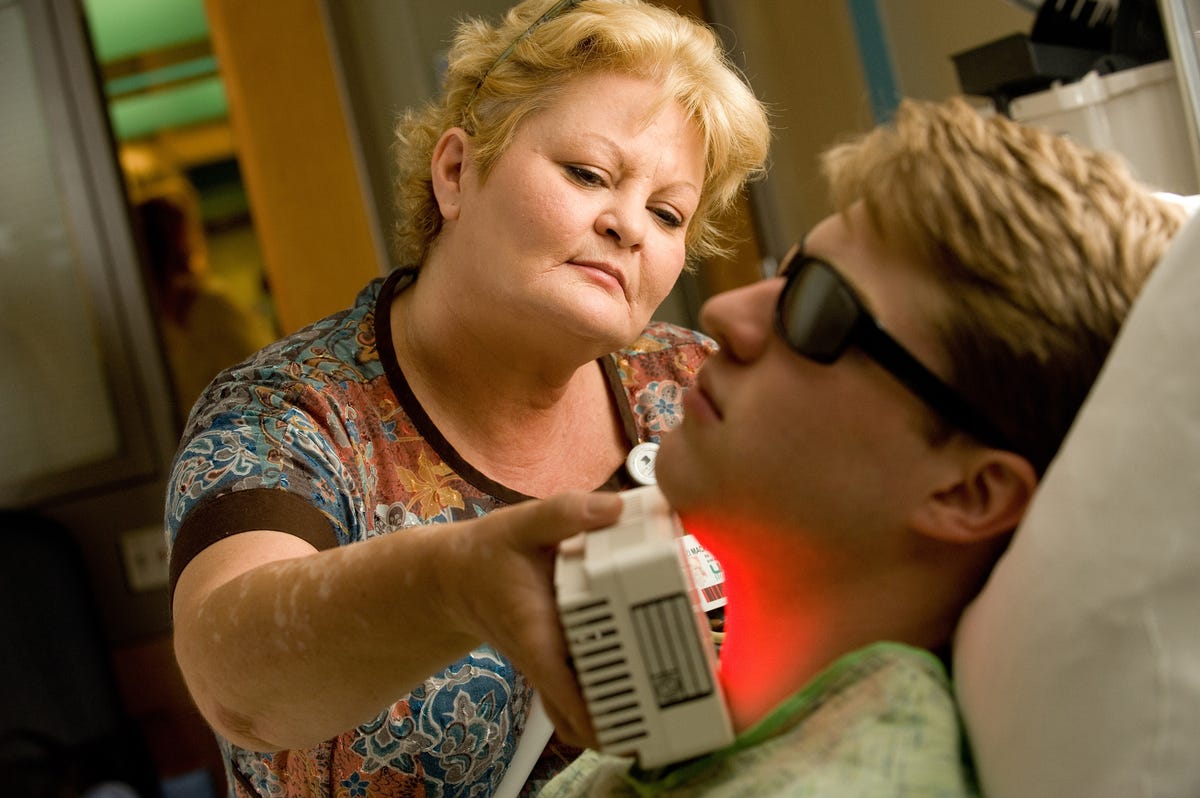LED tech helps ease chemo's side effects (photos)
Originally developed in the early 1990s to promote plant growth onboard space shuttles, new LED technology is helping to soothe the painful side effects from chemotherapy and radiation treatment.

Bone Marrow Transplant and Cellular Therapy Unit
The HEALS technology is being used to help soothe the painful side effects from chemotherapy and radiation treatment in patients with bone marrow and stem cell transplants. HEALS stands for High Emissivity Aluminiferous Luminescent Substrate.
The LED technology provides an intense light energy that's equivalent to 12 suns from each of its 288 LED (light-emitting diode) chips.
In the Bone Marrow Transplant and Cellular Therapy Unit at the University of Alabama at Birmingham Hospital, nurse Mitzi Macke (far left) demonstrates use of the WARP 75 device to treat oral mucositis, a painful side effect of chemotherapy and radiation treatment.
Astroculture 3
Since then Quantum has worked further to develop HEALS technology for use in the medical field to heal wounds, treat tumors, and combat oral mucositis.
Array of LED chips
Dr. Donna Salzman
NASA spinoffs
Other notable NASA spinoffs that have made their way into the civilian world include bar codes, fire-fighting equipment, shock-absorbing helmets, edible toothpaste, joysticks, and ski boots.

